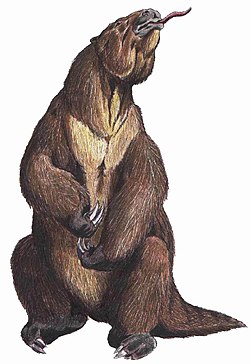| Cyclopedidae Temporal range: Pliocene to present | |
|---|---|
 | |
| Scientific classification | |
| Domain: | Eukaryota |
| Kingdom: | Animalia |
| Phylum: | Chordata |
| Class: | Mammalia |
| Order: | Pilosa |
| Suborder: | Vermilingua |
| Family: | Cyclopedidae Pocock, 1924 |
| Genera | |
| |
The Cyclopedidae is a family of anteaters that includes the silky anteater and its extinct relative, Palaeomyrmidon . [1]

